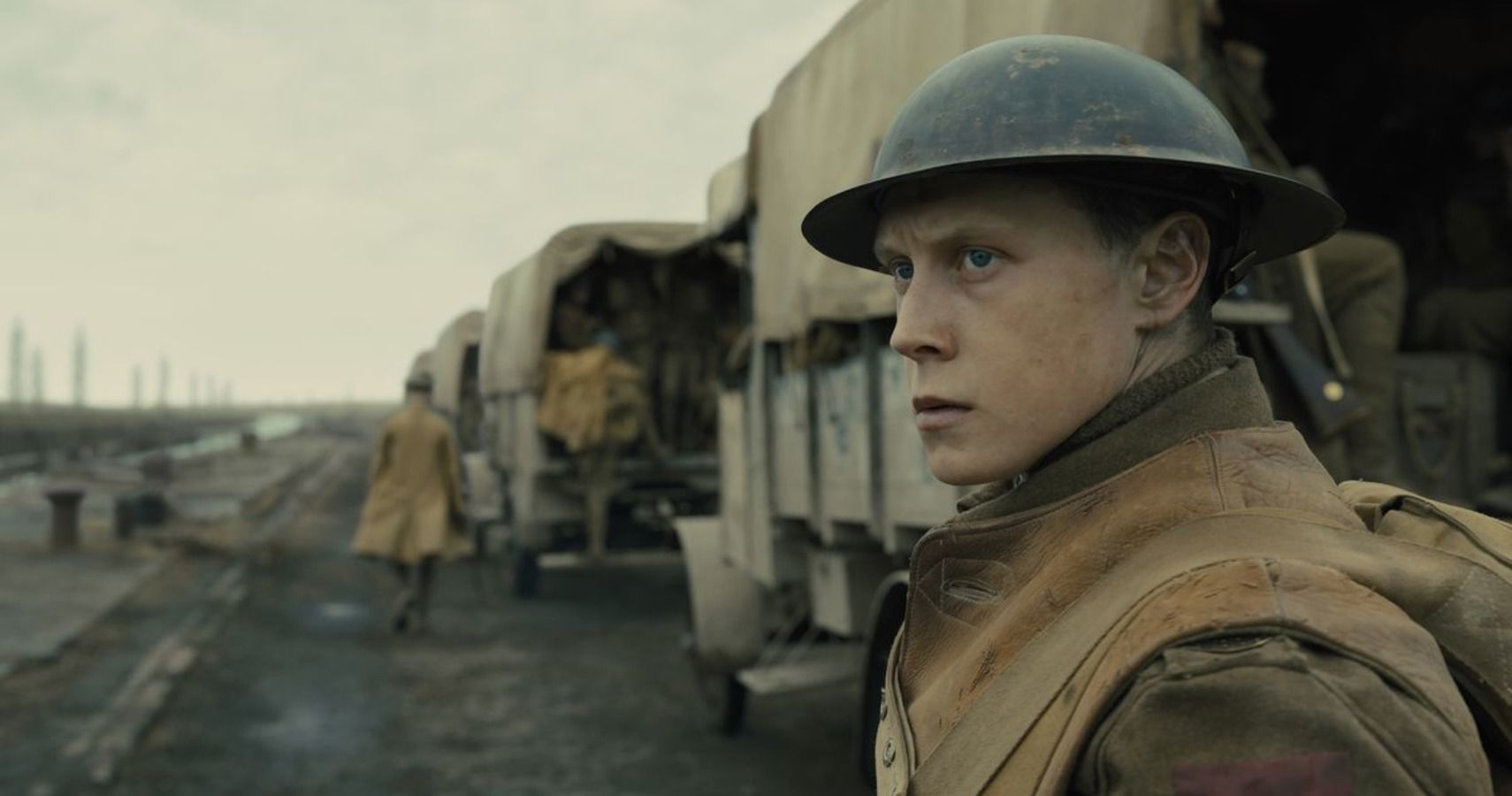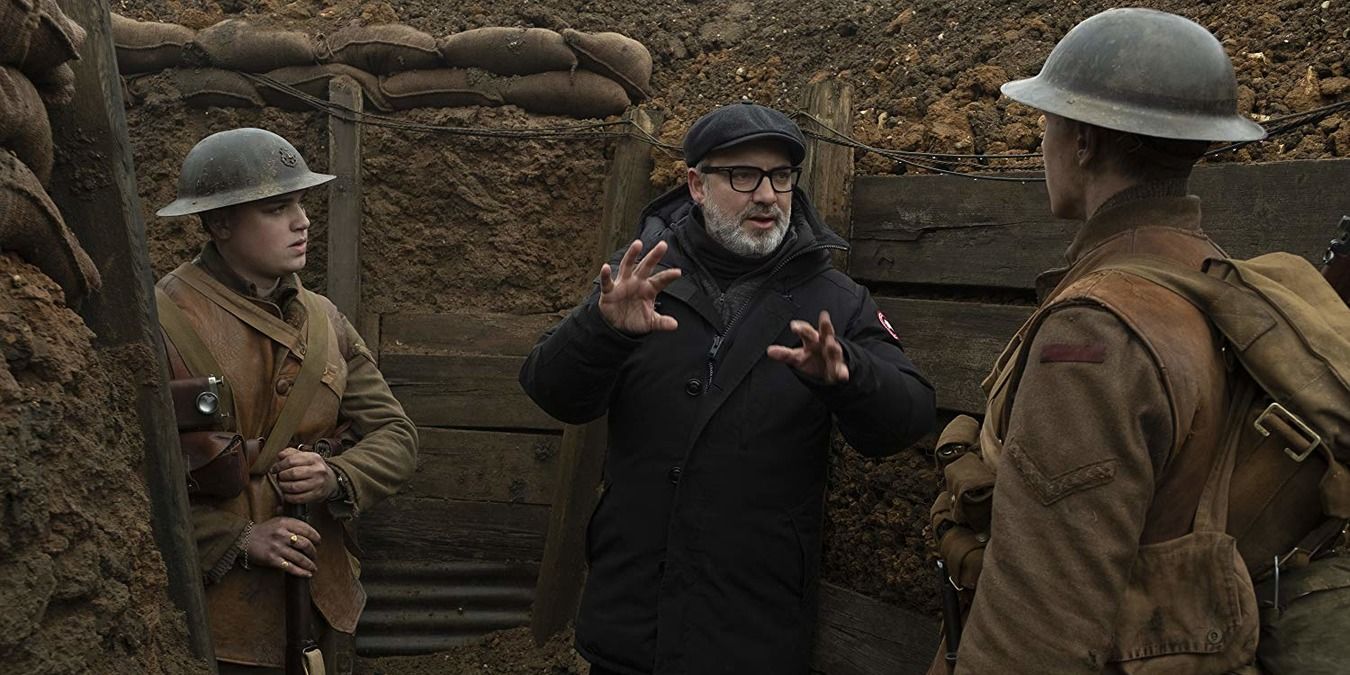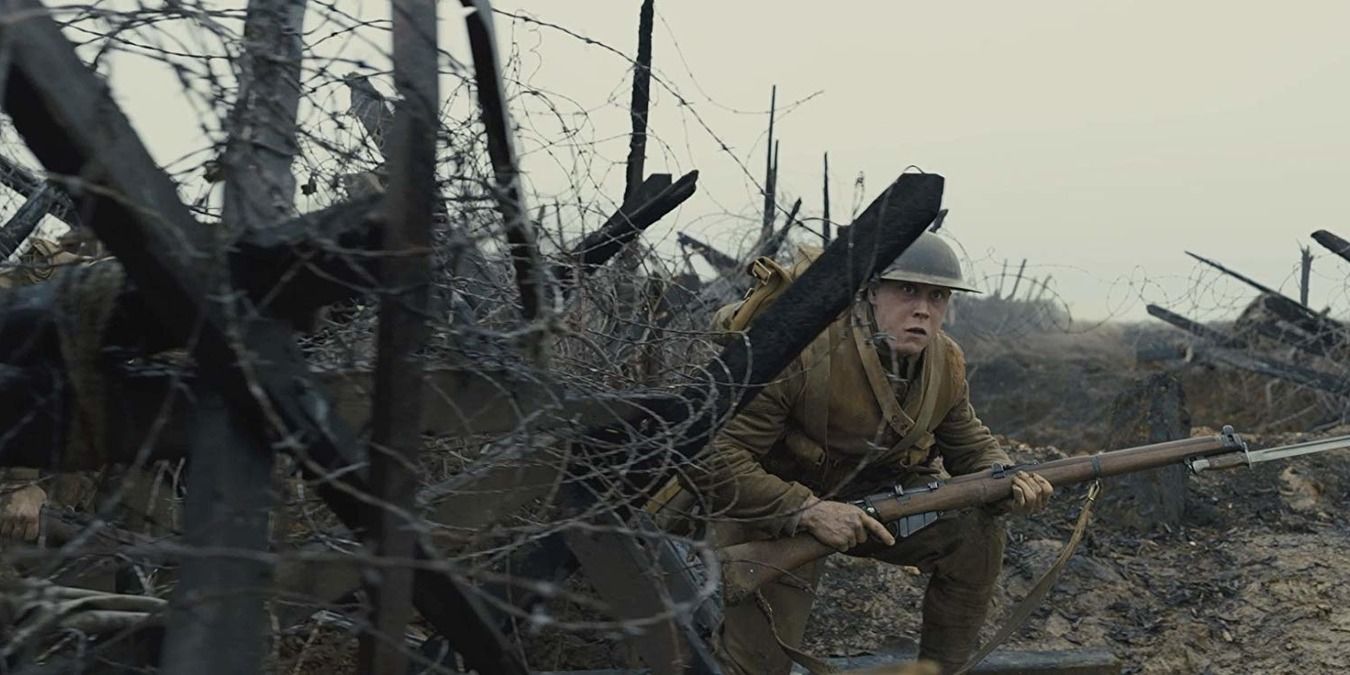This brand new war drama is crushing both the box office and critics reviews. Nominated for this year's Academy Awards, including for Best Picture, this movie takes place during the World War 1. With two young British soldiers leading the film's story, director Sam Mendes and his team made an exceptionally realistic and visually stunning final product.
In case movie buffs are wondering what is real and what is Hollywood drama, look no further. Here are X historical connections the movie made to WWI, and X things made exclusively for the big screen.
Historical: Lance Corporal Alfred H. Mendes
This movie was actually created by Sam Mendes in inspiration of his grandfather. The story is based on parts of his Alfred H. Mendes's time as a "runner", a messenger, for the British army on the Western Front. While the events aren't actually real, Sam Mendes's grandfather did relay stories to him about his time serving, including sprinting across "no man's land". The movie was dedicated to his grandfather, and was largely inspired by his experience.
Historical: The Military Medal
There is a large discussion between the two main characters about receiving a Military Medal. McKay's character has received one, and claims it is only an object. However, both his character and Chapman's are convinced that Lance Corporal Blake will receive a medal for taking on the mission.
In real life, Mendes's grandfather was given the Military Medal after volunteering to locate soldiers during the Battle of Passchendaele. Therefore, this part of the movie was definitely inspired by real events.
Fictional: The Characters
While the director was inspired by this grandfather, the entirety of the main characters, Lance Corporal Blake (Dean-Charles Chapman) and Lance Corporal Schofield (George MacKay) are completely fictional. They are not based on any real-life soldiers, and their stories are totally fabricated.
In fact, none of the characters in the film are based off of any real person, including the General and Colonel (played by Colin Firth and Benedict Cumberbatch). Still, all of the characters were certainly dynamic and interesting.
Historical: The Trenches on the Western Front
During film production, they actually has a British Army veteran, Paul Biddiss, act as a technical adviser. While the trenches were dug by the crew, the setting was greatly based on the trenches that existed during the war.
During the war, these trenches went on for miles of complicated twists and turns. The trenches on the Western Front were a pivotal feature of WWI, and were created with as much accuracy as possible. The crew dug 2,500 feet of trenches.
Historical: The Battle of Passchendaele
During the time that this movie takes place, the First Battle of Passchendaele (or the Third Battle of Ypres) were underway. The battle that occurs in the film is heavily modeled on the Battle of Poelcappelle, which took place during the previously mentioned battles.
This battle campaign was created based on misleading information, much like it was in the movie. During this battle, the Allies thought they had an advance, but in reality they did not.
Fictional: The Mission
In reality, by 1917, this task likely wouldn't have been assigned. The level of danger presented is extreme, and would only be assigned if the matter was absolutely crucial. Sure, saving 1,600 men is important, but it's unlikely this task would have been performed.
By 1917, many other uses of signals were provided, such as messenger pigeons or signal lamps. Still, messengers would definitely have been sent in pairs, and were at many points during the war. While this mission could have happened, during this time, it probably would not have been. Of course, this specific one is fabricated in its entirety.
Historical: The Tasks Performed by Cast Members
While the two main characters walk through the trenches, there are a ton of background characters performing duties. Army Veteran, Paul Biddiss, also lent his expertise to these extras. He assigned them tasks and activities that he remembered being a large part of the "waiting" time during the war.
For example, using candles to kill lice, filling sandbags, or even playing chess with buttons. Biddiss describes a lot of waiting in the trenches, and wanted every background character to be showing signs of boredom while completing their tasks or simply passing the time.
Historical: The Date - April 6th, 1917
This date is based off of the events that took place on April 5th. During the war, the Germans did move their troops, to the Hindenburg Line along the Aisne River. The dispute between the Allies viewing it as a "retreat" and the Germans seeking resources and a better location was actually based on real events.
Therefore, the date and events are inspired partly by true events. As well, April 6th was the date that the Americans entered the war.
Fictional: The Plot
While there are nods to specific battles and stories from both Mendes's and MacKay's ancestors, the entire plot is definitely fabricated. The mission was written by the crew members, and there is no part of the movie that is directly based entirely off of a real-life event.
The plot to save a man's brother and his entire battalion is an incredible tale, but it's one that's made up. This certainly doesn't take away from the movie's awe, but it's important to note that the story is not necessarily a true one.
Historical: The Germans Destroyed Everything
While it is historically accurate that the Germans retreated, they also did actually obliterate everything that could be used by the Allies. Roads, bridges, and water pipes were destroyed in case the Allies moved forwards. As well, all civilians were evacuated, which left the desolate and abandoned scenes that the soldiers stumble across in the film. Booby-traps and barbed wire were also heavily used before the Germans retreated, which is definitely a large part of the film.











